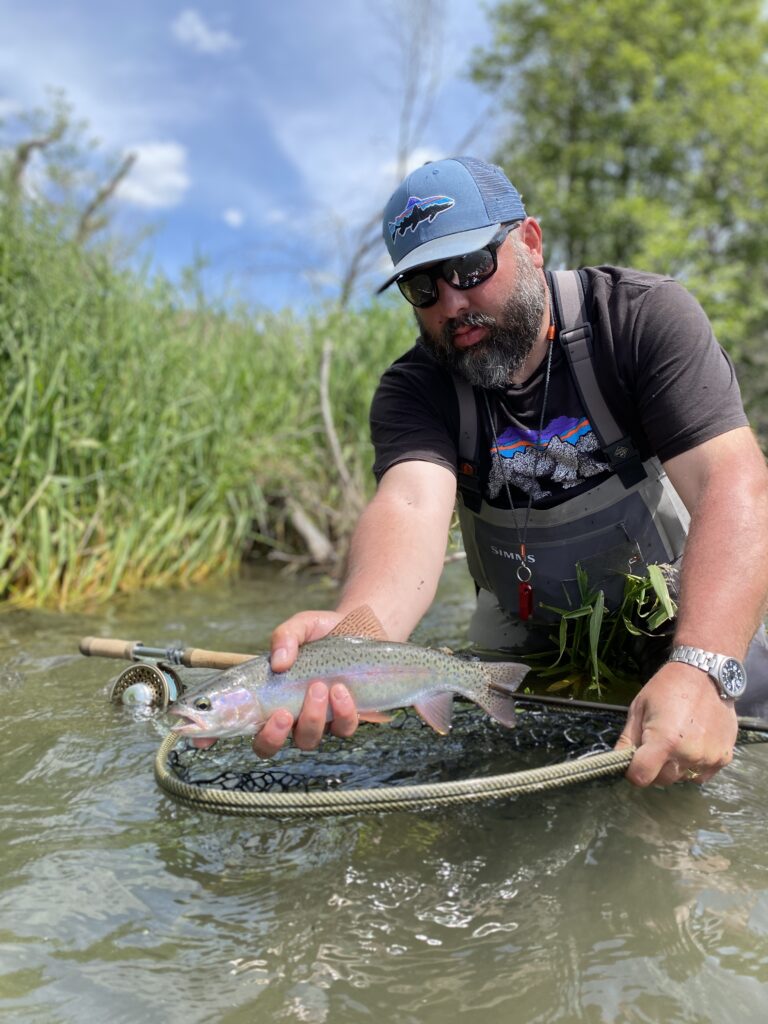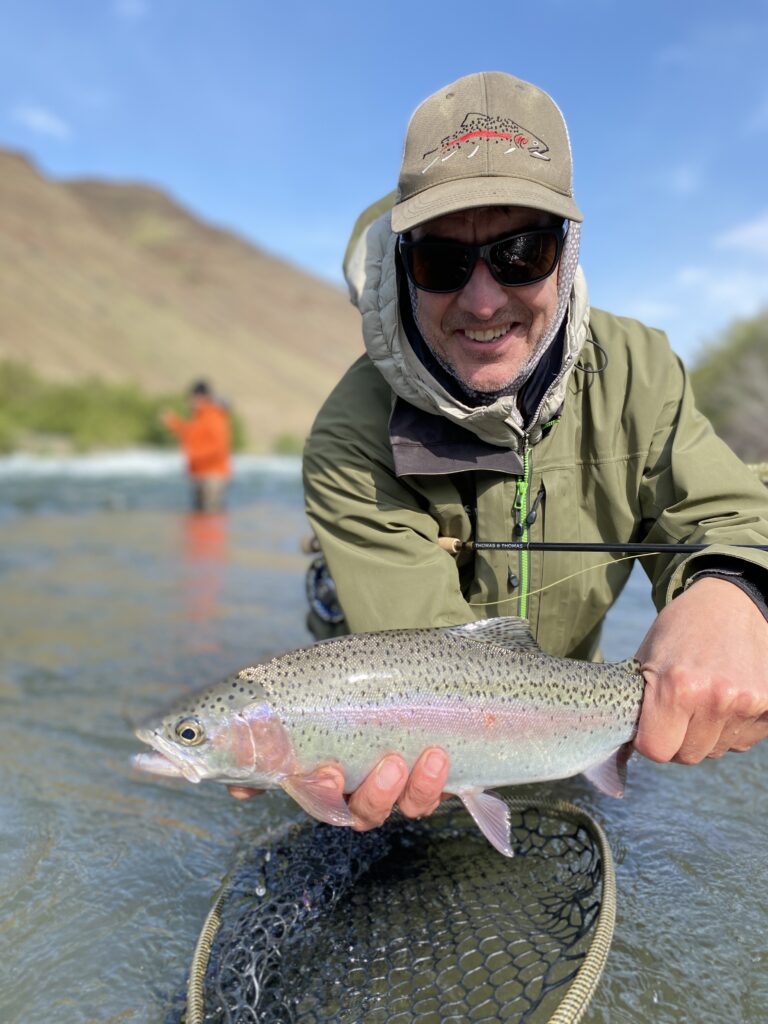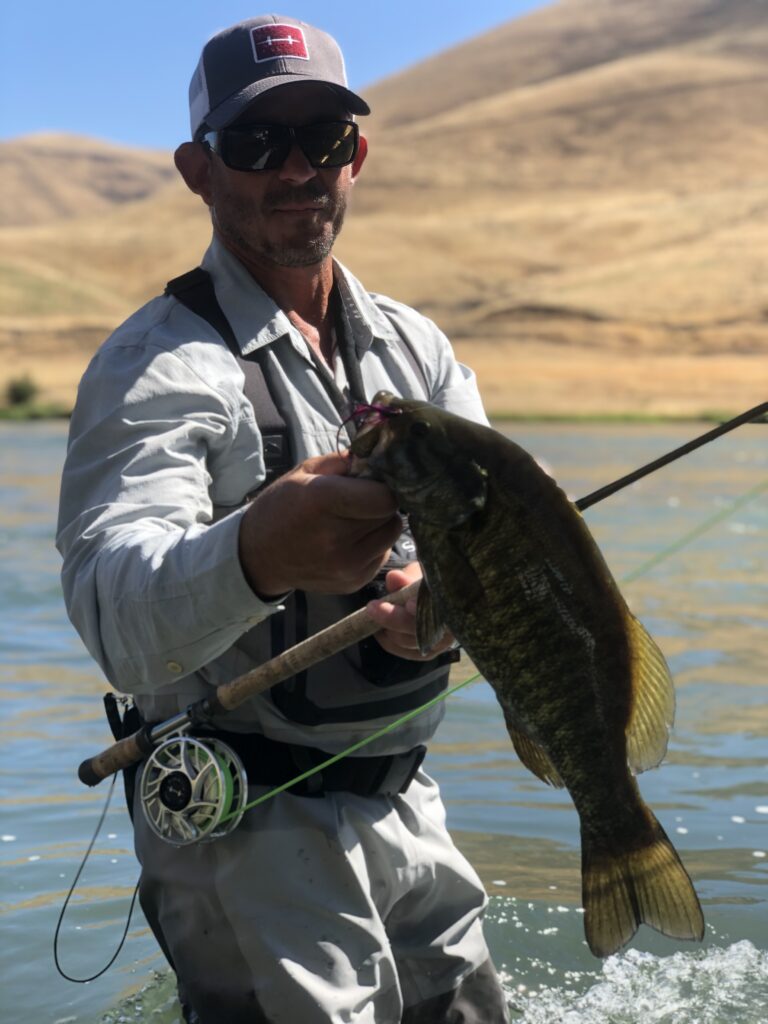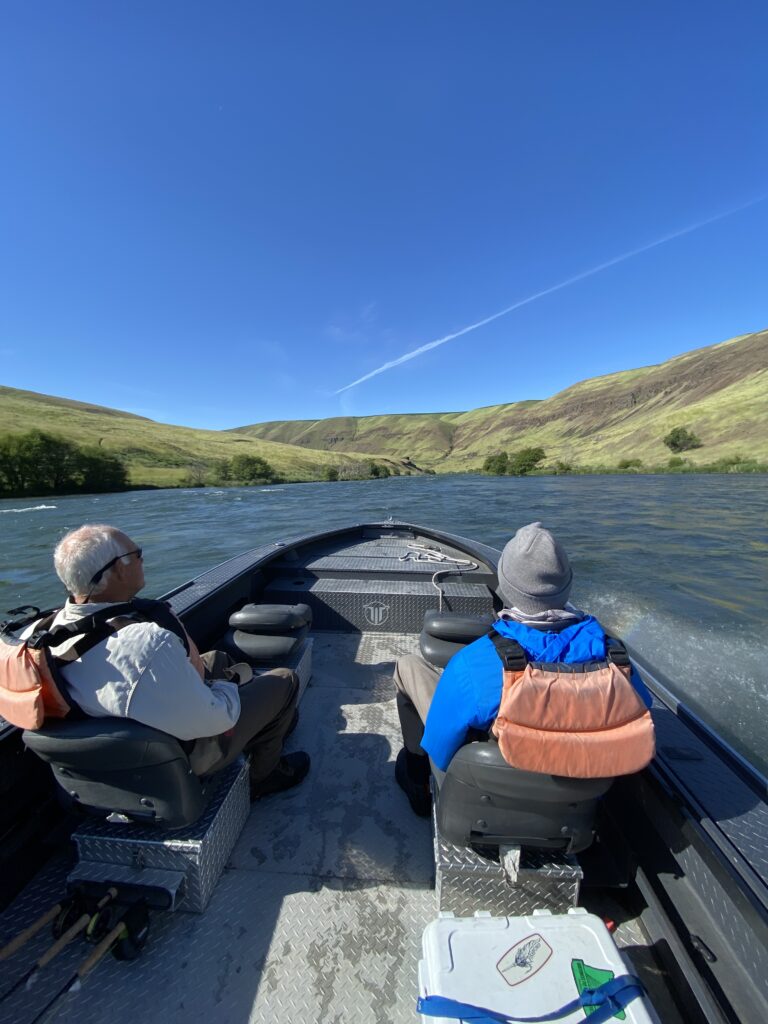
We specialize in the pursuit of trout with a spey rod on the lower Deschutes. We swing small flies, big flies, dry flies, all types of flies. The section of the Deschutes we fish is segment four, the lowest of the lower Deschutes. Section four starts at Macks Canyon. Macks Canyon to Heritage Landing at the mouth of the Deschutes is twenty-four miles. This is the most remote section of the Deschutes River, no houses, no Reservation, no town, no road, one way in one way out. After leaving the Deschutes Canyon, the river widens and flattens, giving way to long pools with even depth and rapids in between.
Almost three decades ago we started swinging flies for steelhead on the lower Deschutes. In that time we have caught many more trout than steelhead swinging flies. Many fish are so big, so fast and so strong you might think you have a steelhead on the line on the initial run. We took notice and made notes. There is only so much a trout, even a large powerful trout can do against a 13′ seven weight spey rod, 500 grains of skagit and a sink trip. The heavy lines and the strong flows are just too much for the trout to fight against for very long. Enter the “micro spey”, or Trout Spey if you will. Short two handed rods with very compact shooting heads designed for the pursuit of trout with a swung fly.

We use two handed rods for trout for the same reasons we fish them for steelhead. Tight quarter casting, efficiency, power, distance and pure effectiveness. Todays “Trout Spey” are incredible at all the aforementioned and a lot of fun to cast and fish. Modern lines allow modern rods to cast big heavy flies and heavy sink tips.
Although the lower Deschutes in central Oregon is a very famous tailwater fishery we fish nearly 100 miles downstream near the Columbia River. The world famous Deschutes “redside” does not live down here. Lower river trout are silver with a slight pink blush, red fins with white tips. The lower river is wide and powerful with a noticeable lack of eddies and slow water, the trout that live here are some of the strongest in the world. Most fish are 10-13″ with the larger fish 14-15″, fish 16″ and over are giants with 2×4 dimensions. Once or twice a year we see a twenty inch fish, our largest is 23″. I believe these giant fish move in and out of the Columbia, same as the small mouth bass, chasing the food.

There are smallmouth bass in the lower Deschutes as well and we often catch them on the retrieve, some are quite large. In 2022 smallmouth bass are illegal to angle for, call ODFW to voice your opinion.

We use a Willie Predator built for four to take two anglers against the current up the mighty Deschutes River. All of the runs we fish for summer steelhead hold trout. We know which runs hold the most trout and where and what they like to eat. Trout Spey trips are very similar to steelhead trips. Trout and Steelhead are biologically the same fish, fact! Trout are most likely to eat your fly on a floating line first light and last light. Pursuit of trout with a swung fly mid-day works best with a sink tip. If you are a steelhead angler this sounds familiar. There are some subtle differences when fishing sculpin patterns but only sometimes and I find myself fishing fewer and fewer sculpin patterns every day.

If you would like to learn more about trout Spey on the Deschutes or just want to fish this amazing river, we runs trips April-November. We provide rod and reel, flies, lunch, and an exciting boat ride. We do not provide and Oregon Fishing License.





